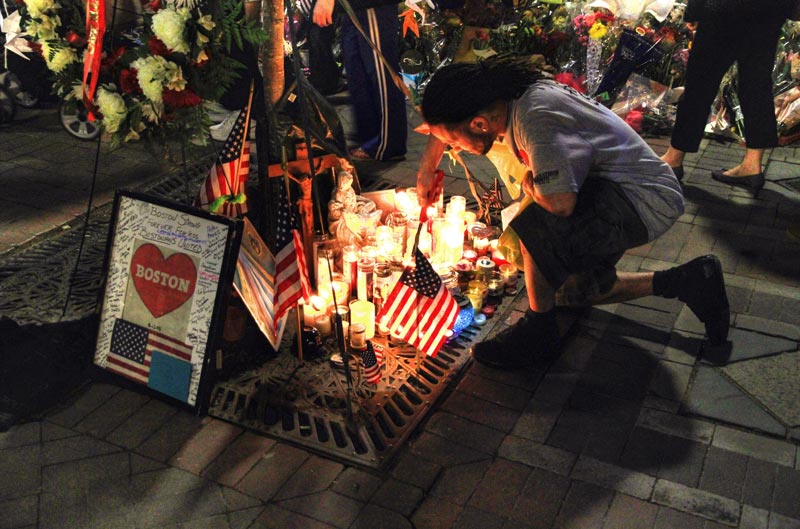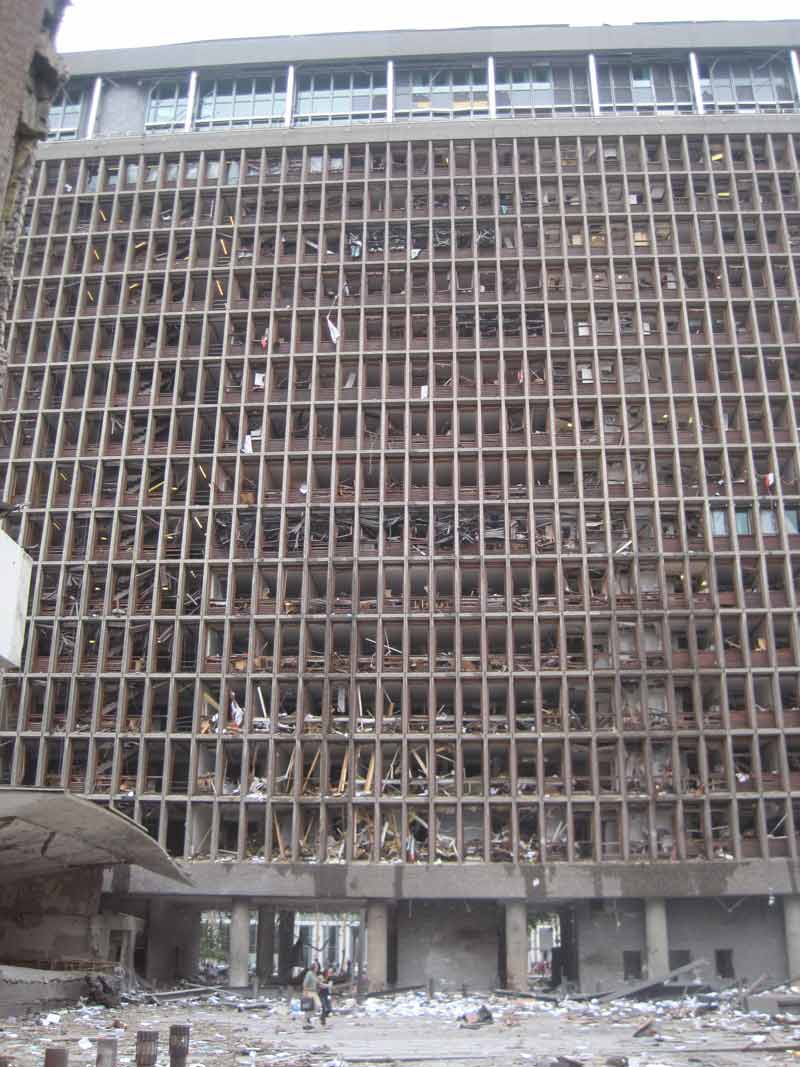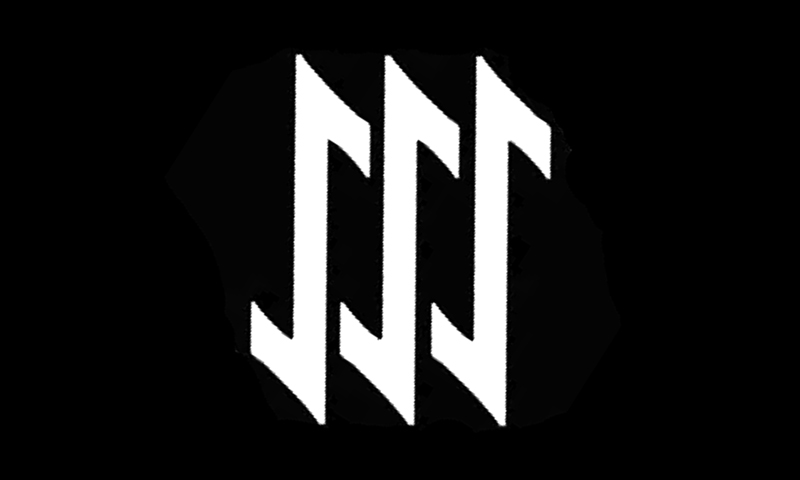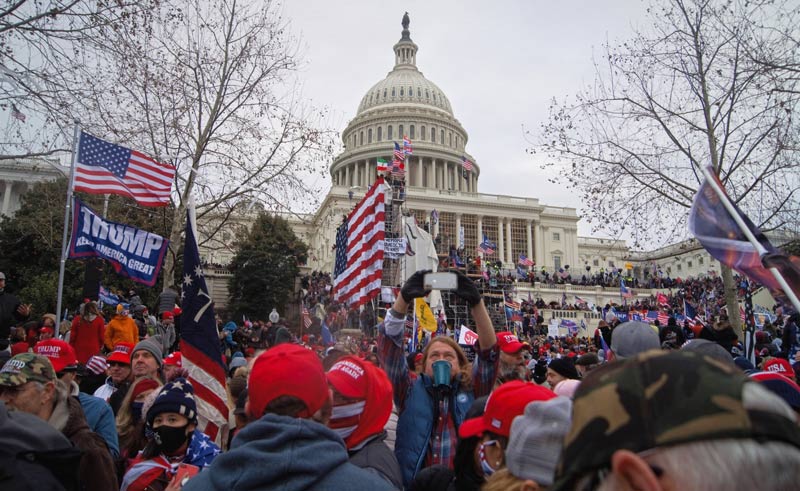
“The threat from domestic terrorists who are not inspired by foreign terrorist organizations has increased.”
There have been 230 unsuccessful attacks or plots in the United States since New York’s World Trade Center and the Pentagon in Washington were hit in 2001 at a cost of nearly 3,000 lives. Just 28 of the planned attacks were directed by foreign terrorist organizations.
The Brown University-based Costs of War project says 118 foiled attacks involved homegrown violent extremists inspired by such organizations, and 84 were planned by domestic terrorists. But the balance is shifting.
“The data show that the threat from domestic terrorists who are not inspired by foreign terrorist organizations has increased sharply in the past two years, with 12 unsuccessful attacks and plots in 2019, and 13 in 2020,” said a summary of the 20-page report, part of a continuing series of papers by scholars, legal experts, human-rights advocates and physicians from across America.
“The vast majority of these unsuccessful attacks had been prevented through the use of traditional law enforcement tools—evidence that suggests that it is policing in the U.S. rather than war abroad that is protecting U.S. residents from violent attacks.”
There were almost 300 hate groups in Canada in 2019-2020.

Sleeping next to the elephant as it does, Canada is far from immune. Experts have cited cross-pollination between white nationalists and other far-right organizations on both sides of the border.
Barbara Perry, director of the Centre on Hate, Bias and Extremism at Ontario Tech University in Oshawa, has noted there were almost 300 hate groups in Canada in 2019-2020 and over 120 violent incidents since 1990, including three mass murders.
Prosecutors said the pair wanted to instigate a civil war.
She told the Ottawa Conference on Security and Defence in March that military experience is a common thread among many groups. A 2018 military police report identified 53 forces personnel who were affiliated with hate groups or had committed hate crimes.
On Oct. 28, a U.S. judge sentenced a former Manitoba army reservist, Patrik Mathews, to nine years in prison, plus three years of supervised release, for charges related to what the FBI described as a neo-Nazi plot to instigate a race war in the United States.
Prosecutors had successfully argued for a “terrorism enhancement,” meaning they were promoting a federal crime of terrorism, although Mathews and his co-accused, U.S. army veteran Brian Lemley Jr., weren’t charged with terrorism.
Both pleaded guilty in June to firearms charges linked to a neo-Nazi plot to attack a gun-rights rally in Virginia last January. The pair hoped the event would lead to clashes between police and tens of thousands of heavily armed protesters.
Prosecutors said the pair wanted to instigate a civil war that would “decimate racial and ethnic minorities and subjugate women,” according to court documents.
Mathews was first publicly identified as a recruiter for a neo-Nazi group, The Base, in 2019 after an undercover investigation by Winnipeg Free Press reporter Ryan Thorpe. Mathews disappeared after RCMP raided his Beausejour, Man., home.
He crossed into the U.S., where he disappeared for months until he was arrested in Maryland in January 2020.In July 2019, when an FBI undercover agent went through an online vetting interview for admission into The Base, the operation found that Mathews, Lemley and other group members conducted paramilitary training at camps in Georgia.
FBI officers got court orders in December 2019 authorizing them to install a closed-circuit TV camera and microphone in the apartment where Mathews and Lemley were living. It captured them discussing their plans to attack the rally.
The judge said their exchanges amounted to more than “just talk.” He said he could hear their “virulence, passion and deadly nature,” including proposals to kill Black people, Antifa protesters and a police officer.
The Costs of War report, commissioned by Brown’s Watson Institute for International and Public Affairs in Providence, R.I., contends that the DHS has been slow to respond to the changing nature of the security threat to the United States and hasn’t placed enough focus on domestic terrorism.
Written by Erik Dahl, an associate professor of national security affairs at the Naval Postgraduate School in Monterey, Calif., the document says these shortcomings “helped create the environment that has produced numerous deadly attacks in recent years, including the assault on the U.S. Capitol on January 6, 2021.”
The Homeland Security Act of 2002 established the DHS, combining 22 separate federal departments and agencies to co-ordinate efforts. Combatting the threat posed by international terrorism in the aftermath of the 9/11 attacks, particularly al-Qaida, was its primary mission.
Despite misleading statements from right-wing politicians and pundits across the United States, domestic threats have proven to be the greater menace to U.S. national security.
Just in the past two years alone, white nationalists attempted to kidnap the governor of Michigan and threatened other public figures, including the mayor of Wichita, Kan., and New York Senator Chuck Schumer.
Driven largely by white nationalists and others on the far-right, elements of the Capitol mob tried to stop certification of the 2020 presidential election results, and threatened to lynch then vice-president Mike Pence and kill Democratic House Speaker Nancy Pelosi.
The paper says Homeland Security was a relatively minor player in thwarting most of the plots over the past 20 years and credits the FBI, the intelligence community and state and local law enforcement for the bulk of the work.It says the terrorist threat has transformed.
The report says 14 of 16 unsuccessful domestic terrorism attacks attempted in the U.S. in 2020 were prevented through action by law enforcement, most often with the FBI or the Joint Terrorism Task Force in the lead.
“Plots are often foiled by these organizations because members of the public report violent posts that individuals make online,” it said. “This occurred when a man from Cleveland, Ohio, was arrested in May 2020 for plotting to ambush law enforcement officers in order to start an uprising against the government.”
It says the terrorist threat has transformed from what U.S. government officials first perceived as a primarily international threat to a largely domestic one.
The far-right carried out all but one of the 17 domestic extremist attacks in the U.S. in 2019. Of the 84 failed domestic terrorism plots since 9/11, all but three can be categorized as far-right wing, said the report. The motive was unclear in one of the remaining cases, while two cases stemmed from far-left ideologies or beliefs.
“Yet, DHS has consistently suffered from a blind spot when it comes to domestic terrorism. Until very recently, DHS has continued to focus on international terrorism and failed to adapt its policies and efforts to meet the rising threat of white supremacy and other domestic terror threats from within its own borders.”

By comparison, the head of the British domestic intelligence service MI5 recently said the United Kingdom has disrupted 29 plots in four years, 10 of them from extreme right-wing terrorism.
The report did point out that no attacks on the scale of 9/11 or worse were executed in the United States.
“It is important to note that despite the warnings that additional al Qaeda cells were waiting to carry out attacks, it appears that no such cells existed. Some experts have argued that there never was a real threat of another such major attack, while others see the lack of another 9/11 style attack as a success of U.S. counterterrorism on the home front.”
The report says that although the number of deaths from international terrorism has remained much lower than most experts would have expected, “the number of attacks and deaths from other types of terrorism—most notably domestic terrorism—has been growing.”
The report called the Jan. 6 riot in D.C. “the most striking demonstration of the rise of the domestic terrorism threat—and the lack of focus on that threat.”
At last spring’s virtual defence and security conference based in Ottawa, General John Hyten, vice-chairman of the U.S. Joint Chiefs of Staff, said he feels “domestic terrorism is a domestic crime” that, for now, should be addressed by law-enforcement agencies, not the military. The challenges confronting America at this time, he added, are “nowhere near” those of the 1860s or 1960s.
“This is a democracy of different views and different outlooks and different structures,” he said. “The strength of the democracy over the years has been our ability to define a common purpose and get along.”
Canadian speakers made it clear that such “different” views and outlooks are not welcome north of the border. The key to avoiding a large-scale spillover into Canada, said some, is to nip the growth of domestic terror in the bud.
Perry said the two countries differ on hate speech, which she defined as speech that is dangerous and promotes hatred and violence toward specific communities.
“It’s important to remind ourselves that we’re not Americans; we’re not absolutist in terms of free speech; that we have identified and defined legitimate limitations on freedom of speech in this context.”
In August, Global News obtained a declassified Canadian intelligence report warning that far-right extremist groups have been “actively recruiting” past and present members of the military and police.
The report noted 17 examples in Canada, the U.S., Britain, New Zealand and Germany illustrating “the intersections and relationships between ideologically motivated violent extremism and uniformed personnel.”
Canadian military members were involved in six of the cases.
“IMV (ideologically motivated violence) extremist groups [are] actively recruiting uniformed personnel,” said the Canadian government threat assessment. “Several xenophobic and anti-government/anti-authority violent extremist groups openly recruit current and former military and law enforcement personnel.”
It said the organizations included the Oath Keepers, Proud Boys and Boogaloo Movement, along with the Three Percenters, a self-described “patriot” group that took part in the U.S. Capitol assault.
The organization, it added, has “a small number of members in every province, including members of the military, ex-military, and police; the movement is growing in Canada.”
Advertisement














